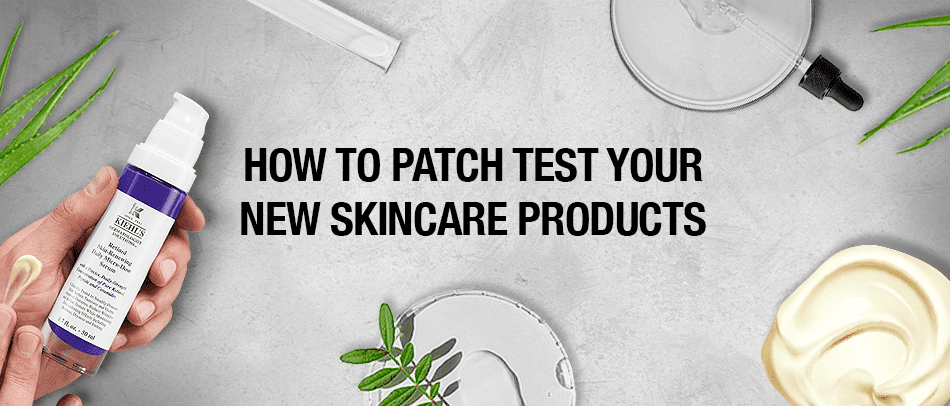Sensitive skin can make it challenging to try new skincare products. When you add new products to your routine, especially those with active ingredients, you might discover they can easily irritate your skin.
If you’re prone to skin irritation, patch testing new skincare products can help determine if they’re compatible with your skin. The test lets you better understand your skin’s tolerance to certain ingredients. It can even reveal the likeliness of skin purging, a common effect of active ingredients like retinol.
Read below to learn how to patch test skincare products so they don’t cause skin complications.
What is a Patch Test?
Some skincare ingredients, such as fragrances, preservatives, dyes, and emulsifiers, are potential allergy triggers that can cause skin damage. Before using them, patch testing is necessary to know if the product formulation won’t harm your skin.
A patch test involves applying small amounts of a skincare product onto a small part of the skin to determine if it will cause any adverse reactions. The reactions can be as mild as redness or as severe as itchy, rough rashes that feel hot. For example, you can patch test your skin’s response to retinol vs. vitamin C to determine which ingredient is more compatible with you.
Simply put, patch testing skincare products lets you choose suitable solutions without side effects. It enables you to identify what ingredients to avoid when shopping for products.
How to Do a Patch Test
Follow the steps below on how to patch test skincare products to avoid irritation-causing ingredients.
Step 1: Choose the patch test area
Select a small and discreet area of your skin. Make sure the target patch area isn’t somewhere you can accidentally wash the skincare product off. Experts suggest placing it inside your forearm, bend of the elbow, or behind the ear. These spots let you easily observe your skin’s reaction without drawing too much attention to the area.
Step 2: Apply a small amount to the area

After cleaning the area, apply a small amount of the skincare product you want to test. Do this on a quarter-sized patch of the skin. You may follow the product’s instructions or add a more sizable portion.
Step 3: Leave it undisturbed
Let the product sit on the skin long enough. For example, sunscreen products are most effective within 2 hours of application. So if you’re testing this product to see whether it can prevent sun damage on the skin without adverse reactions, you can leave it on the patch area for that duration.
On the other hand, you can leave some products on the skin for a few minutes, depending on usage instructions. Then, avoid washing or using other products on your face when trying out cleansers to prevent them from interfering with the test.
Step 4: Observe the patch of skin
Remember to regularly check the patch test area for any signs of skin irritation or allergic reactions. Do the patch test twice daily for 7-10 days since reactions may not happen immediately. This will let you see your skin’s response to the product over time. Look for redness, itching, swelling, or rashes. If you experience any discomfort, stop using the product immediately.
Step 5: Evaluate the results
After the recommended patch testing duration, check the patch test area. No adverse reactions indicate that the product is likely safe to use on your skin. But if you notice any adverse effects on the spot, it’s best to avoid using the product altogether. Relieve the affected skin area using a cool compress or petroleum jelly.
At-Home vs. Professional Patch Test
Performing a patch test at home is an easy way to determine if new products outside your routine are compatible with your skin. However, you can also get a professional patch test done.
While both methods aim to assess your sensitivity to a product, at-home patch testing has limitations. The main difference between the two methods is that DIY patch testing doesn’t tell you whether your skin’s response is an allergic reaction or just irritation. Moreover, it doesn’t single out the specific ingredient your skin reacts to.
Meanwhile, patch tests from dermatology clinics provide more comprehensive results. Dermatologists typically use standardized test panels that include many allergens and potential irritants, allowing for a thorough evaluation. With more accurate results, you’ll know what specific skincare component makes your skin react.
Tips for Choosing Products That Won’t Irritate Your Skin

- Remember to review the ingredients list. Ensure the product’s ingredients are compatible with your skin type and won’t react negatively to the ingredients you already use.
- Don’t add skincare products with ingredients known to irritate the skin. For instance, fragrances, parabens, sulfates, and alcohol are not the right ingredients for an anti-aging skincare routine since they can cause drying and redness.
- Select products with the appropriate consistency for your skin type. Take cream moisturizers, for example. This product can be a perfect match for dry skin but clogs the pores of oily skin types.
- Always go for products with mild formulations, especially those containing active ingredients. Fortunately, Kiehl’s Retinol Micro-Dose Serum has a formulation perfect for daily use. As part of Kiehl’s dermatologist solutions range, this product is formulated by dermatologists to ensure maximum safety and efficacy. This means you can use this product daily without worrying about redness, flakiness, or other side effects.
Let Your Skin’s Beauty Glow Safely
Having sensitive skin doesn’t mean you can’t try new skincare products anymore. All you need to do is to conduct a patch test. Although a DIY test works well enough, getting a professional patch test is the best way to ensure your skin’s safety when shopping for skincare products.
Last but not least, choose the right products that will make your skin shine through. Check out Kiehl’s skincare products for sensitive skin today.

